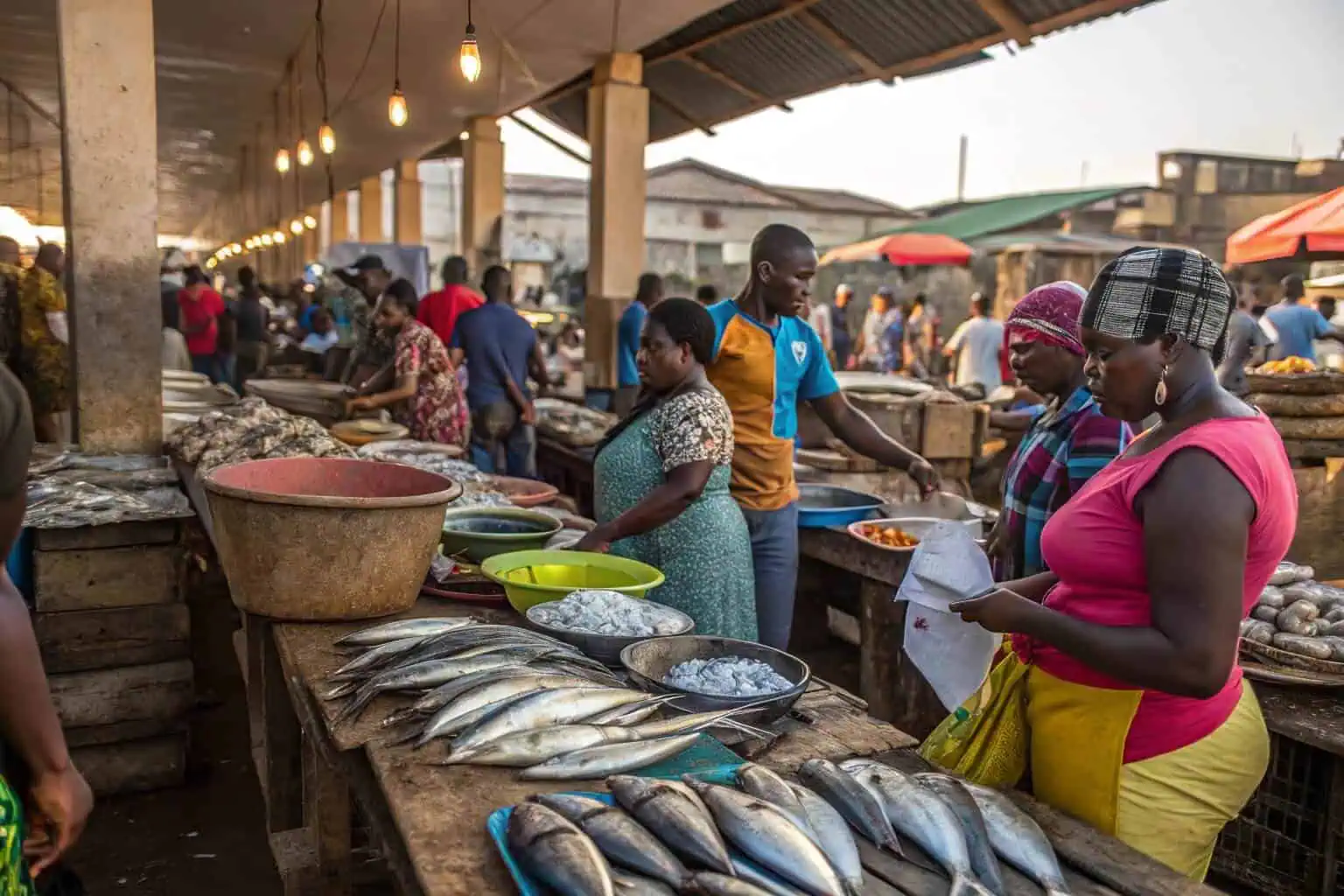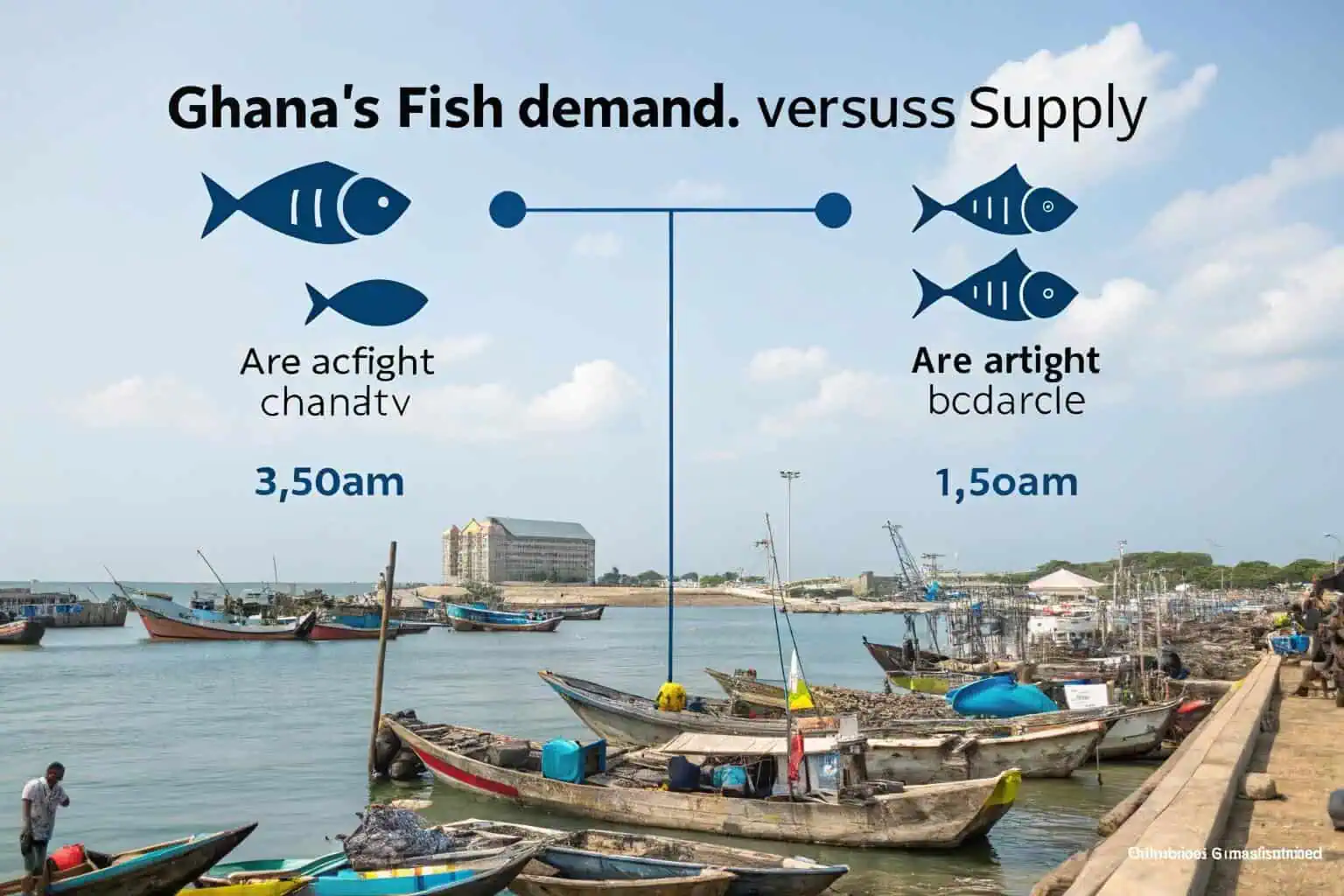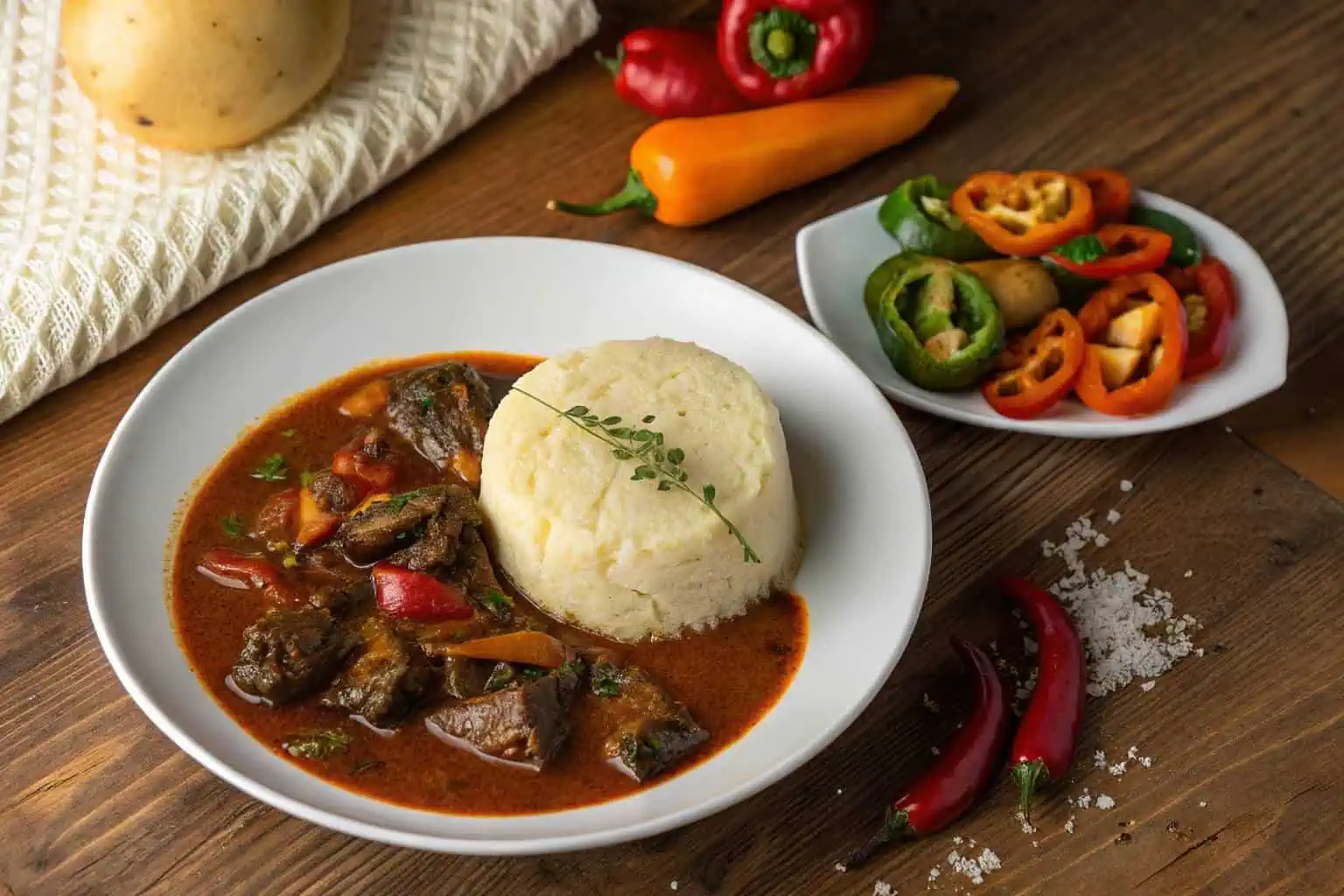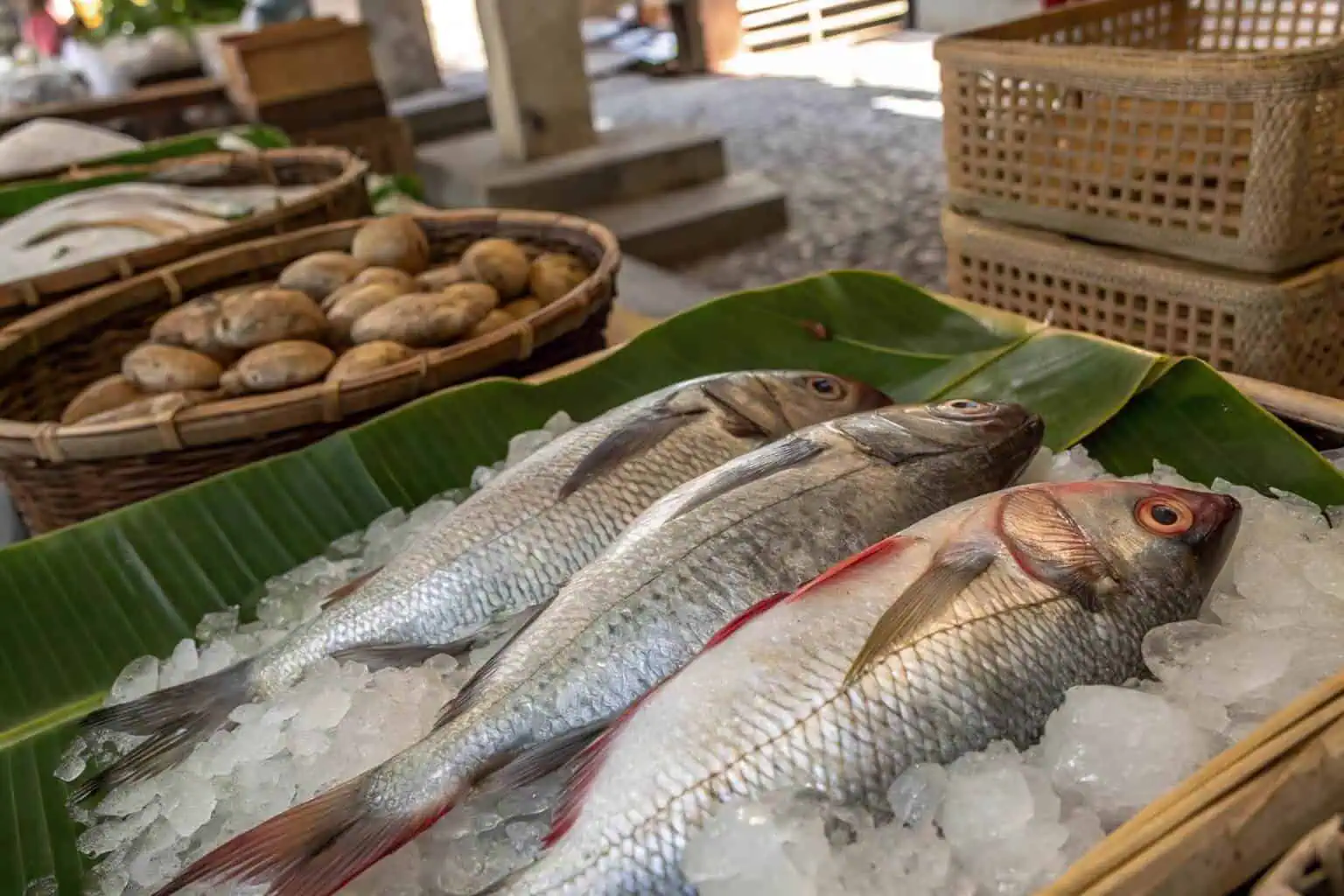What is the most consumed fish in Ghana?
Are you curious about Ghanaian food? Do you wonder what fish people eat most there? I'll share what I've learned.
Ghanaians eat a lot of fish, especially mackerel and sardines. These fish are affordable, tasty, and packed with nutrients, making them a daily staple in many homes.

Fish is incredibly important in Ghana. It's more than just food; it's a big part of the culture and the economy. I've spent a lot of time looking into Ghana's fishing industry and how people eat. It's fascinating to see how central fish is to daily life. From bustling markets to family dinner tables, fish is everywhere. This journey has shown me that understanding fish consumption is key to understanding Ghana itself.
What is the most popular fish in Ghana?
Choosing a fish can be hard with so many options. Worried you might pick the wrong one for an authentic taste? I can tell you what locals love most.
Mackerel and sardines are the stars in Ghana. They are easy to find, don't cost much, and are very good for you, so many Ghanaians eat them regularly.

When I first started exploring Ghanaian cuisine1, I noticed mackerel and sardines everywhere. These aren't just popular; they are fundamental. Mackerel, often called 'salmon' locally (though it's different from Atlantic salmon), is prized for its oily, flavorful flesh. It's grilled, smoked, or added to stews and soups, providing a rich taste. Sardines, usually the canned variety (often Sardinella aurita or similar species), are a quick and easy protein source. They are often mashed into sauces, eaten with bread, or added to rice dishes. Their popularity comes from a simple truth: they offer great value. In a country where managing household budgets is important, these fish provide essential protein and omega-3 fatty acids2 without breaking the bank. I've seen families rely on them, and street food vendors use them extensively. It's a testament to their versatility and importance in the Ghanaian diet.
Why Mackerel and Sardines Reign Supreme
I believe their dominance comes down to a few key factors. First, availability. Both fresh (for mackerel) and canned (for sardines) forms are widely distributed across the country, from coastal towns to inland villages. Second, affordability. Compared to other protein sources, they are relatively cheap. This makes them accessible to a large portion of the population. Third, culinary flexibility3. They fit into so many traditional Ghanaian dishes. Think about a hearty groundnut soup with smoked mackerel, or a simple meal of kenkey with fried sardines and pepper sauce. These are everyday meals that bring comfort and nourishment.
A Closer Look: Mackerel vs. Sardines
To help you understand better, here's a simple comparison:
| Feature | Mackerel (Local 'Salmon') | Sardines (Canned) |
|---|---|---|
| Price | Relatively affordable | Very affordable |
| Availability | Fresh, Smoked, Frozen | Canned, widely available |
| Taste Profile | Oily, rich flavor | Varies by brand, generally savory |
| Common Uses | Grilling, smoking, soups, stews | Sauces, with bread, rice dishes |
| Nutrition | High in Omega-3, protein4 | Good source of protein, calcium |
My research shows that these aren't just food items; they are woven into the fabric of Ghanaian life5. Their consistent presence on dining tables across the nation underscores their title as the most popular fish.
What is the fish demand in Ghana?
Concerned about Ghana's food supply? Fish is a vital part of it. But is there enough to go around for everyone?
Ghana has a very high demand for fish. In fact, domestic fishing cannot meet this demand, so the country imports a lot of fish, especially frozen types.

From my studies, Ghana stands out in Africa for its fish consumption6. People here eat more fish per person than in many other African countries. This high demand means fish is a cornerstone of national food security. However, this strong appetite for fish creates a significant challenge. The waters around Ghana, both the Atlantic Ocean and inland sources like Lake Volta, are rich in fish. But even with these resources, the local fishing industry7 struggles to catch enough to satisfy everyone. I learned that this gap between what's caught locally and what's needed is filled by importing large quantities of fish, mostly frozen. This reliance on imports has big implications for the economy and for the sustainability of global fish stocks. It's a complex issue that Ghana is working to manage.
Understanding the Numbers
While exact figures can vary year by year, the trend is clear: Ghana's per capita fish consumption8 is impressive, often cited as being well above the African average and even some global averages. This means an average Ghanaian eats a significant amount of fish annually. The national demand, when you add it all up, is huge. Local fishermen, using canoes and larger trawlers, work hard, but the ocean has its limits, and sometimes fishing practices themselves can impact future catches. This is where the imports come in. I've seen markets filled with boxes of frozen mackerel9, horse mackerel, and other species from fishing fleets around the world. This ensures fish remains available, but it also means a lot of money leaves the country to pay for these imports.
The Import-Export Balance and Its Effects
Ghana isn't just an importer; it also exports some high-value fish, like tuna. I found this interesting because it shows Ghana's connection to the global seafood market on both sides. The tuna10 industry, for example, brings in foreign currency and provides jobs. However, the value of imported fish often outweighs the value of exported fish. This situation highlights the need for better fisheries management. Sustainable fishing practices, reducing post-harvest losses, and developing aquaculture (fish farming) are all areas I see as crucial for Ghana to improve its fish self-sufficiency and protect its marine environment. It's a delicate balance between meeting current needs and ensuring fish for the future.
| Aspect | Details | Implications |
|---|---|---|
| Per Capita Consumption11 | High, among the top in Africa | Strong cultural reliance on fish |
| Domestic Supply | Marine (canoes, trawlers), Inland (Lake Volta) | Insufficient to meet national demand |
| Imports12 | Significant quantities of frozen fish (mackerel, horse mackerel, etc.) | Economic cost, reliance on foreign supply |
| Exports | High-value species like tuna | Source of foreign exchange, employment |
| Challenges13 | Overfishing, sustainable practices, post-harvest loss, developing aquaculture | Need for strategic fishery management |
What is the most popular food in Ghana?
Want to try real Ghanaian food? Wondering which dish truly captures the nation's taste and spirit? I can guide you.
Fish is a star in Ghanaian meals. It's often eaten with traditional staples like fufu and banku, creating delicious and culturally rich dishes loved by many.

When I think about popular food in Ghana, fish immediately comes to mind, but it's usually part of a larger, more complex dish. The most iconic Ghanaian meals14 often feature a carbohydrate staple served with a flavorful soup or stew, and fish is a very common protein in these accompaniments. Fufu15 and banku16 are perhaps the two most famous staples. Fufu is a soft, dough-like food made by pounding boiled cassava, plantains, or yams. Banku is a fermented corn and cassava dough, also cooked into a smooth, starchy ball. I've seen how these staples are perfectly designed to be eaten with rich, spicy soups and stews, often containing smoked, dried, or fresh fish. The combination is more than just filling; it's a cultural experience. The way these foods are prepared and eaten together tells a story about Ghana's history, agriculture, and community life.
Iconic Pairings: Fish with Fufu and Banku
Let me tell you more about these amazing combinations. A very popular dish is fufu served with light soup or groundnut soup, and you'll often find generous pieces of fish, sometimes smoked or dried, swimming in that delicious broth. The fufu itself is mild, so it perfectly absorbs the flavors of the soup. Banku is frequently served with grilled tilapia and a spicy pepper sauce called shito17, or with okro stew, which also often includes fish or seafood. These aren't just meals; they are celebrations of flavor and texture. The softness of the fufu or banku, the richness of the soup or stew, the savory taste of the fish, and the kick of pepper – it all comes together beautifully. I've enjoyed these meals many times, and each time I appreciate the skill and tradition that goes into making them.
Beyond Fufu and Banku: Other Fish Dishes
While fufu and banku with fish are iconic, Ghanaians enjoy fish in many other ways too. Kenkey, another fermented corn dough staple, is often eaten with fried fish and shito. Waakye, a rice and beans dish, is frequently served with fried fish18 or stewed fish. Even simple snacks can feature fish. Smoked fish is a common ingredient, adding a deep, umami flavor to many dishes. The variety is incredible, and it shows how adaptable fish is in Ghanaian cooking. It's clear to me that fish isn't just an ingredient; it's an essential element that defines much of Ghanaian cuisine.
| Staple Food | Common Fish Pairing | Description |
|---|---|---|
| Fufu | Smoked/dried fish in light soup or groundnut soup | Soft, pounded staple absorbing rich, fish-infused soup flavors. |
| Banku | Grilled tilapia with shito, fish in okro stew | Fermented dough ball, great with spicy sauces and savory fish stews. |
| Kenkey | Fried fish with pepper sauce (shito) | Steamed fermented corn dough, often accompanied by crispy fried fish. |
| Waakye | Fried fish, fish stew | Rice and beans dish, complemented by fish prepared in various styles. |
What is the local fish in Ghana?
Want to taste something truly from Ghana's own waters? Curious about the fish that are native to its rivers and lakes?
Tilapia and catfish are very important local fish in Ghana, especially from freshwater sources. They are a key part of local diets and fishing traditions.

When I explored the local fish scene in Ghana, I found a vibrant world beyond the commonly imported sea fish. Ghana is blessed with significant freshwater resources, most notably Lake Volta, one of the largest man-made lakes in the world, as well as numerous rivers. These waters are home to a variety of local fish species that have been part of the Ghanaian diet for generations. Among these, tilapia19 and catfish20 stand out. These aren't just food; they represent a connection to the local environment and a source of livelihood for many small-scale fishing communities. I've seen tilapia being farmed in ponds and cages, and also caught wild. Catfish, often called 'mudfish', is also highly valued, particularly for its use in traditional soups where its rich flavor is prized.
Tilapia: The Freshwater Favorite
Tilapia is incredibly popular in Ghana. It's a versatile white fish with a mild flavor, which makes it suitable for many cooking methods. Grilled tilapia is a national favorite, often marinated in spices and served with banku and pepper sauce. You'll find it at roadside eateries, restaurants, and family gatherings. The growth of tilapia aquaculture21 in Ghana has also made it more consistently available and affordable. I think its popularity is also due to its adaptability; it thrives in various water conditions, making it a good candidate for farming. This local hero plays a big role in providing fresh protein to many Ghanaians, especially those living inland, away from the coast.
Catfish: The Soul of Soups
Catfish, particularly species like the African catfish (Clarias gariepinus)22, holds a special place in Ghanaian cuisine. It's known for its firm texture and ability to hold up well in slow-cooked dishes. I've learned that it's a prized ingredient in many traditional soups and stews, where its distinct, somewhat earthy flavor adds depth. While some people might be unfamiliar with it, for many Ghanaians, catfish is a comfort food, a taste of home. It's often smoked before being added to soups, which enhances its flavor even more. Beyond its culinary uses, catfish also represents the biodiversity of Ghana's inland waters.
| Local Fish | Key Characteristics | Common Culinary Uses in Ghana | Importance |
|---|---|---|---|
| Tilapia | Mild flavor, white flesh, widely farmed and caught wild | Grilled with banku, fried, in stews | Major freshwater protein source, supports aquaculture |
| Catfish | Firm texture, distinct flavor, often smoked | Traditional soups (e.g., 'light soup'), stews | Valued for flavor, part of cultural heritage |
| Other Local Species | Various smaller riverine and lake species | Local soups, dried, smoked | Support local fisherfolk, biodiversity |
Exploring these local fish has shown me the richness of Ghana's aquatic resources and the deep connection between the people and their natural environment. Supporting sustainable fishing of these local species is vital for both food security and cultural preservation.
Conclusion
Ghana's relationship with fish is deep and vital. From popular mackerel and sardines to local tilapia, fish nourishes, supports livelihoods, and enriches culture, presenting many opportunities.
-
Exploring this resource will deepen your understanding of the diverse and rich flavors that define Ghanaian cuisine. ↩
-
This link will provide valuable insights into the numerous health benefits of omega-3 fatty acids, essential for a balanced diet. ↩
-
Discovering traditional dishes can enhance your culinary knowledge and appreciation for Ghanaian culture. ↩
-
Discovering various protein sources can help you diversify your diet and improve your nutritional intake. ↩
-
Understanding the role of fish in Ghanaian culture can provide insights into its culinary significance and traditions. ↩
-
Explore this link to understand the significance of fish consumption in Ghana and its impact on food security. ↩
-
This resource will provide insights into the struggles of Ghana's fishing industry and its implications for sustainability. ↩
-
Understanding Ghana's fish consumption can provide insights into dietary habits and economic impacts, making it a valuable resource for further exploration. ↩
-
Learning about the implications of frozen mackerel imports can help understand the balance between local fishing and global trade. ↩
-
Exploring this link will provide insights into how the tuna industry supports Ghana's economy and job market. ↩
-
Understanding this can reveal cultural and economic factors influencing fish consumption patterns. ↩
-
Exploring this topic can shed light on the economic implications of relying on foreign fish supplies. ↩
-
This resource can provide insights into the critical issues affecting sustainable fishing practices and management. ↩
-
Learn about the diverse and flavorful Ghanaian meals that reflect the country's rich culinary heritage and community values. ↩
-
Explore the rich history and preparation methods of Fufu, a staple in Ghanaian cuisine that embodies cultural significance. ↩
-
Discover the unique characteristics of banku, a beloved Ghanaian dish that complements various soups and stews. ↩
-
Learn about shito, the spicy pepper sauce that adds a unique flavor to many dishes, and find recipes to try it yourself. ↩
-
Learn about the various Ghanaian dishes that feature fried fish, showcasing its versatility and cultural significance. ↩
-
Explore the cultural significance of tilapia in Ghana, its farming practices, and its role in local diets. ↩
-
Learn about the culinary traditions surrounding catfish in Ghana, including its preparation and flavor profile. ↩
-
Explore this link to understand how tilapia aquaculture is transforming fish farming in Ghana, making it more sustainable and accessible. ↩
-
Discover the unique culinary applications of African catfish in Ghanaian cuisine and its cultural significance. ↩